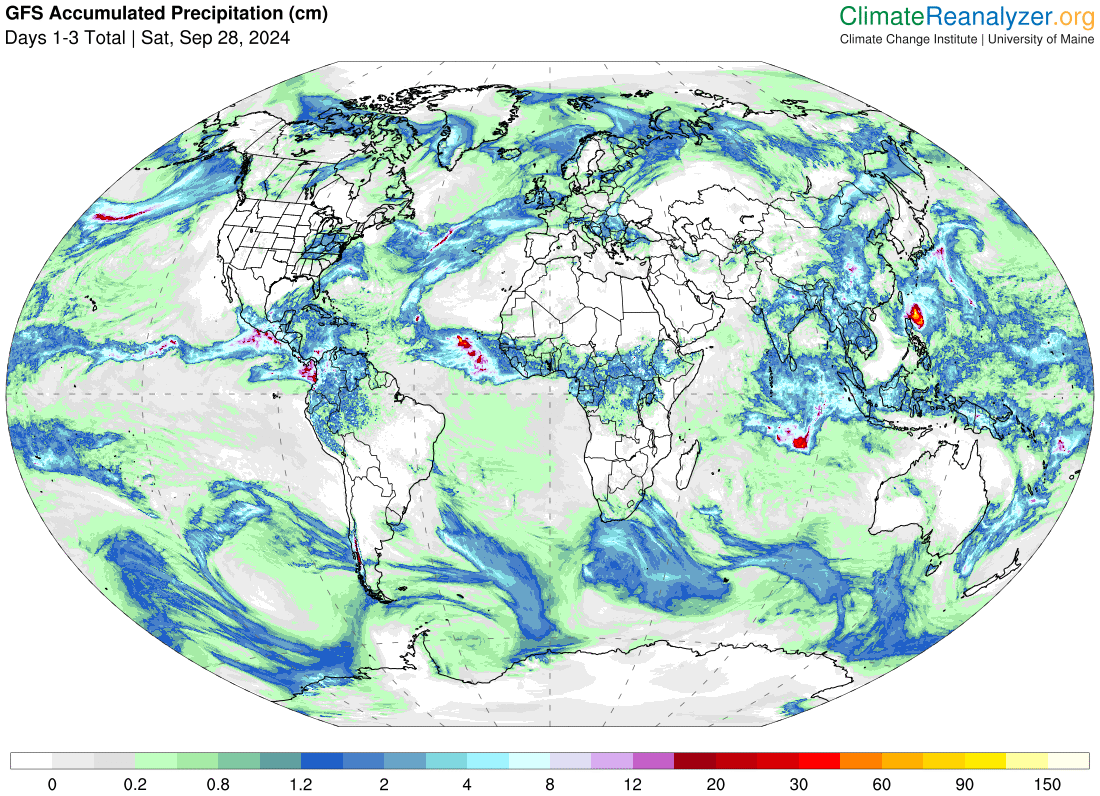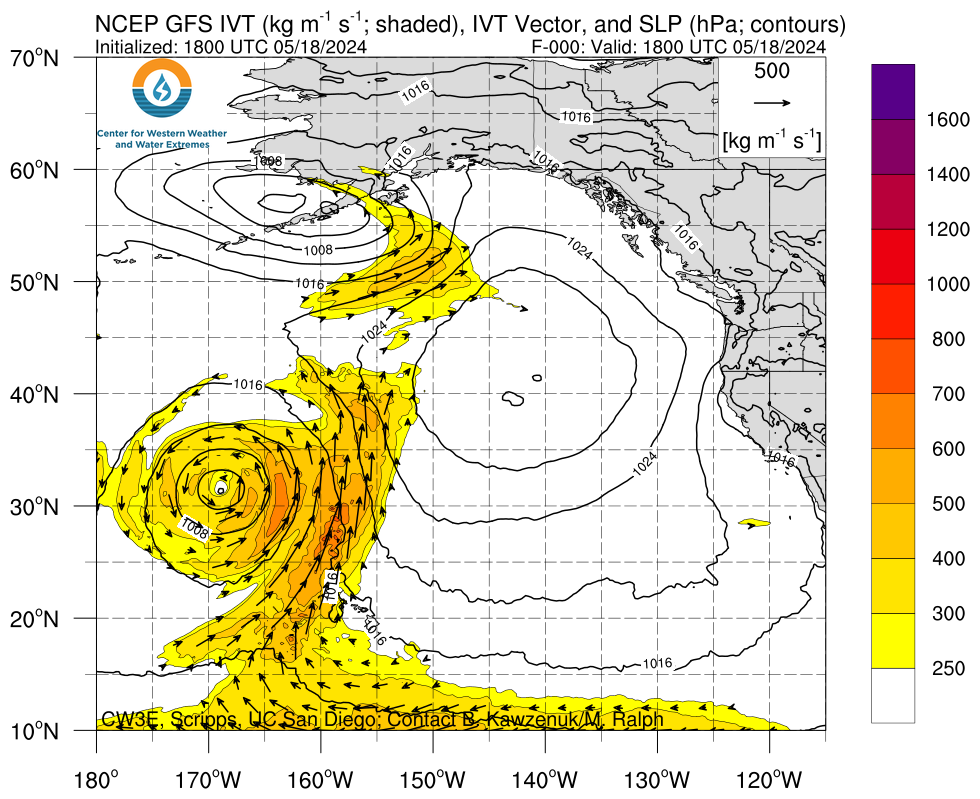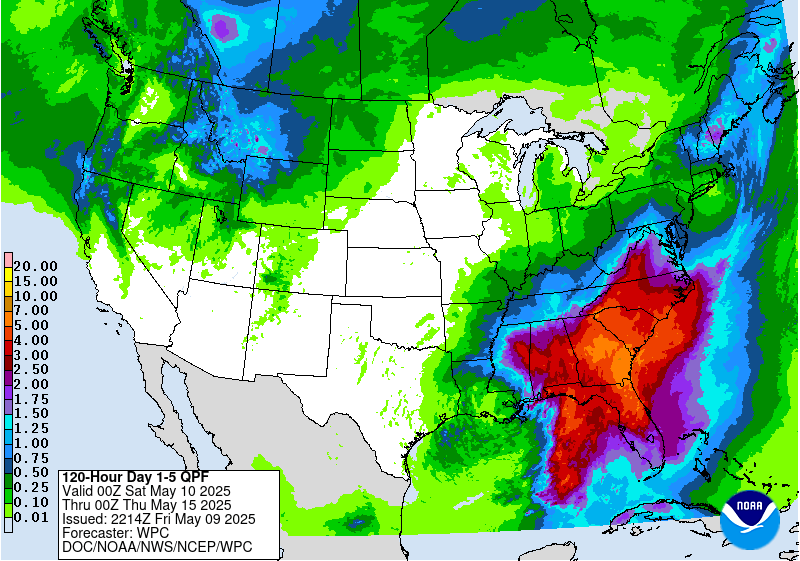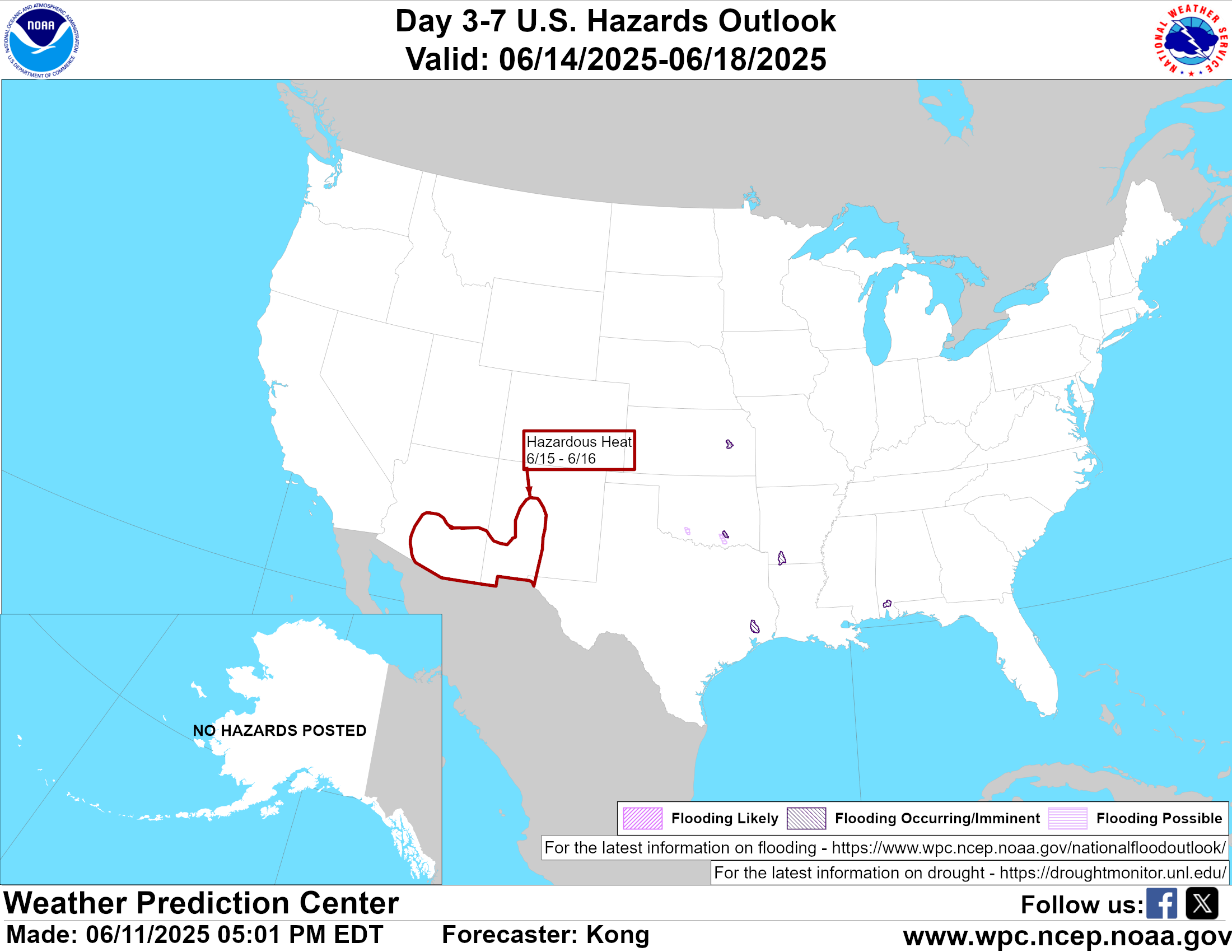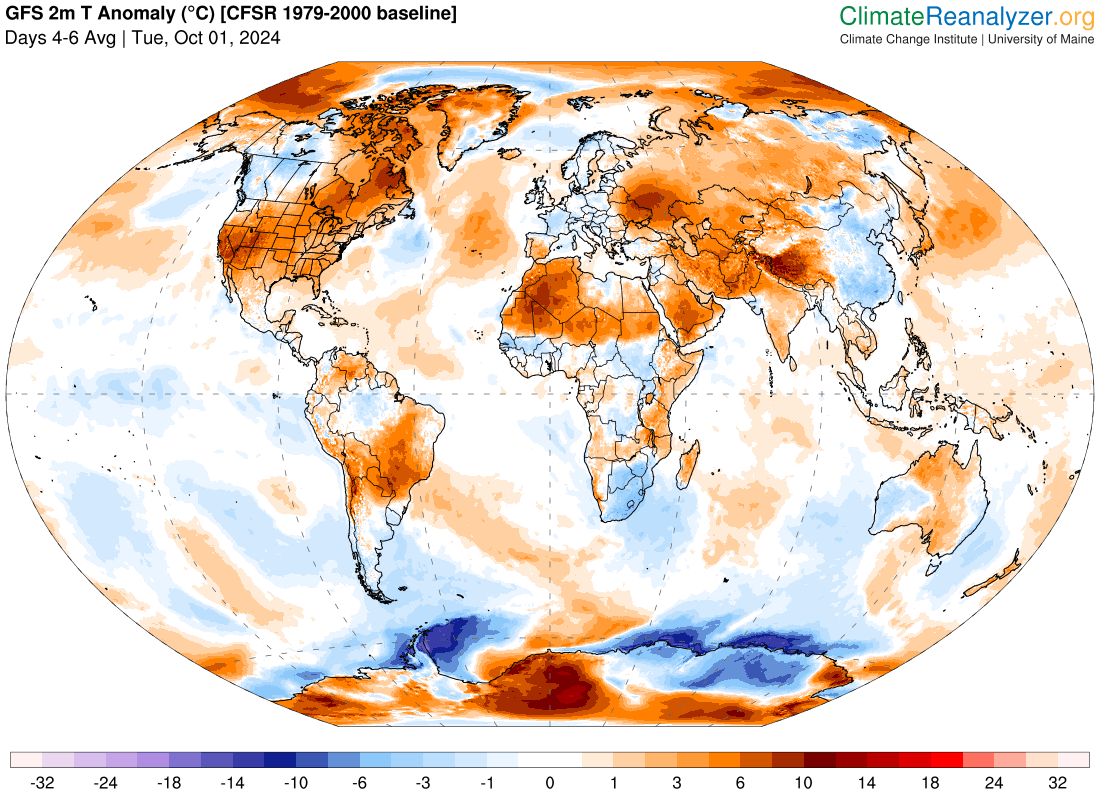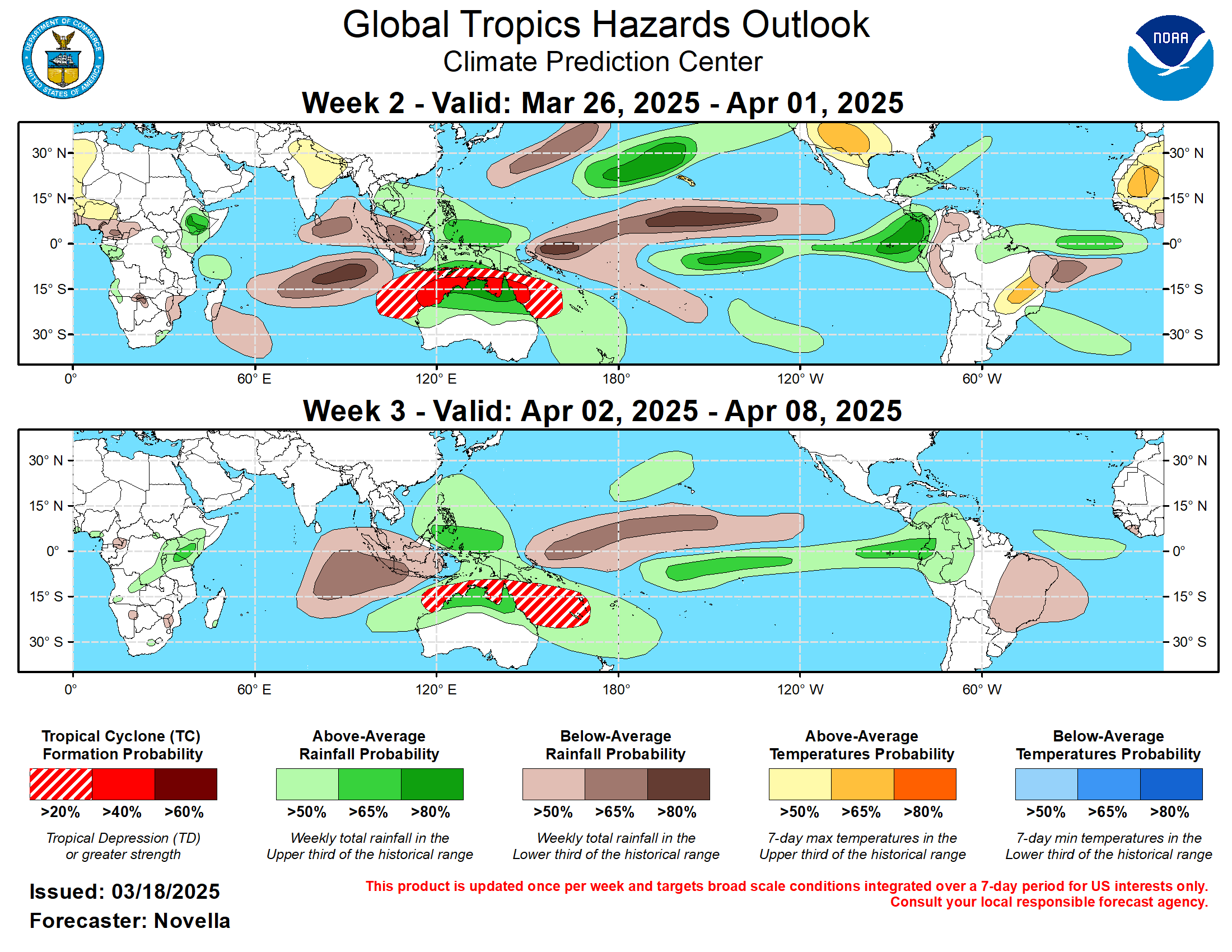This article focuses on what we are paying attention to in the next 48 to 72 hours. The article also includes weather maps for longer-term U.S. outlooks and a six-day World weather outlook which can be very useful for travelers.
First the NWS Short Range Forecast. The afternoon NWS text update can be found here after about 4 p.m. New York time but it is unlikely to have changed very much from the morning update. The images in this article automatically update.
Short Range Forecast Discussion
NWS Weather Prediction Center College Park MD
Sat Aug 10 2024
Valid 12Z Sat Aug 10 2024 – 12Z Mon Aug 12 2024…Unsettled weather extends from the Southwest to the central U.S. over
the next few days, with chances for scattered flash flooding and severe
thunderstorms……Lingering heavy rain potential exists across the eastern Carolinas this
weekend……Above average temperatures continue across the West today before
confining to the southern Plains and Gulf Coast by early next week…The upper level pattern and anomalous atmospheric moisture content in
place across the Southwest and Plains will remain conducive for more
active weather through this weekend. Starting with the Southwest, Four
Corners, and southern/central Rockies, the main threat associated with
developing thunderstorms will be related to intense rainfall rates and
flash flooding. Uncertainty remains on where exactly the heaviest rainfall
will occur, but sensitive terrain and burn scars are most likely to see
impacts. This flash flooding threat also extends westward to the southern
California ranges through Sunday, where slow-moving thunderstorms over
complex terrain could lead to isolated flash flooding concerns. Shifting
to the central and southern Plains, convection is expected to become more
organized as a lingering frontal boundary provides a focus for heavy
rainfall potential from Oklahoma to southern Missouri. After an initial
round of storms over central Oklahoma tonight, another round of possibly
slow-moving convection is expected Sunday night from southeast KS and
northeast OK to the western Ozarks. Several inches of rainfall are
possible within a short period of time, which could lead to scattered
instances of flash flooding. Scattered thunderstorms are also forecast to
extend throughout much of the central and northern Plains, but quick
forward motions and lesser coverage should keep the flash flooding threat
localized. In addition to heavy rainfall, these storms could contain
isolated hail and damaging wind gusts.After recently getting doused by T.S. Debby with several days of tropical
downpours, the eastern Carolinas may see additional bouts of heavy
rainfall over the next few days as sufficient atmospheric moisture content
remain in place along a stalled frontal boundary. This stationary front
combined with diurnal sea breeze activity could spark numerous slow-moving
thunderstorms capable of containing intense rainfall rates. Given most
soils remain overly saturated across the Carolinas, the flash flooding
threat will remain slightly elevated. Residents and visitors are advised
to have multiple ways of receiving warnings and never drive through
flooded roadways.Temperatures throughout the Lower 48 into the beginning of next week will
feature widespread below average highs from the Plains to the Northeast
underneath broad high pressure, with forecast high temperatures in the 70s
and low 80s. Summer heat will remain confined to the Southern Tier,
including the Southwest today before a cooling trend commences. Meanwhile,
oppressive heat and humidity will continue and rebuild across the southern
Plains and Gulf Coast by Sunday and Monday as highs soar into the upper
90s and triple digits. This equates to around 10 degrees above the
climatological mean for mid-August, but forecast highs at the moment don’t
appear to threaten any daily records.Elsewhere, continued dry conditions and ongoing wildfires will continue to
produce elevated fire weather conditions and poor air quality across parts
of the Northwest and northern Great Basin. Little changes in the overall
weather pattern should maintain this environment.To get your local forecast plus active alerts and warnings click HERE and enter your city, state or zip code.
Learn about wave patterns HERE.
Then, looking at the world and of course, the U.S. shows here also. Today we are looking at precipitation.
Please click on “Read More” below to access the full Daily Report issued today.
Notices: What would you like to learn about? Please provide that to me via the comment section at the end of the article.
Now more detail on the 48-Hour Forecast (It is a 48 to 72 Hour Forecast actually)
Daily weather maps. The Day 1 map updates twice a day and the Day 2 and 3 maps update only once a day. These maps update automatically. But if that does not happen, you can get updates by clicking HERE
TODAY (or late in the day the evening/overnight map will appear) (Key to surface fronts shown on maps and you will then also be able to insert a city name or zip code and get a local NWS forecast).
TOMORROW
NEXT DAY
We have a new animation of the forecast which shows how things may play out over the next 60 hours. To update click ANIMATION. Doing so will get you to the dashboard. You can then step through the animation or hit LOOP on the upper right of the display. You will have to hit the back arrow ← at the top left on your computer to get back into this article. It is a little more trouble than before but I think NOAA scrapped the animation routine I was using so we have to keep up with “progress”.
The NWS Climate Prediction Center’s: Watches, Warnings, and Advisories plus other information can be found HERE. That takes you to the NWC Severe Weather Site. From there you can select among many categories of information. Remember to hit the back arrow ← at the top left of your screen to return to this article.
ATMOSPHERIC RIVERS
This tells us what is approaching the West Coast. Click HERE to update If I have not gotten around to doing the update. Here is some useful information about Atmospheric Rivers.
Below is the current five-day cumulative forecast of precipitation (Updates can be found HERE)
Ski SnowReports will Resume in the Fall.
Now we look at Intermediate-Term “Outlook” maps for three time periods. Days 6 – 10, Days 8 – 14, and Weeks 3 and 4. An outlook differs from a forecast based on how NOAA uses these terms in that an “outlook” presents information as deviation from normal and the likelihood of these deviations.
Below are the links to obtain updates and additional information. They are particularly useful if you happen to be reading this article significantly later than when it was published. I always try to provide readers with the source of the information in my articles. These links may also be useful for those viewing this article on a cell phone or other small screen.
Days 6 – 10 (shown in Row 1) Days 8 – 14 (Shown in Row 2) Weeks 3 and 4 (Shown in Row 3 but updates only on Fridays) https://www.cpc.ncep.noaa. gov/products/predictions/610day/ https://www.cpc.ncep .noaa.gov/products/predictions/814day/ https://www.cpc.ncep.noaa.gov/products/predictions/WK34/ Showing the actual maps. They should now update automatically. The Week 3 – 4 Outlook only updates on Fridays. So below is what I call the Intermediate-term outlook. On Fridays, it extends out 28 Days. That declines day by day so on Thursday it only looks out 22 days until the next day when the Week 3 – 4 Outlook is updated and this extends the outlook by one additional week.
6– 10
8– 14
3– 4
HAZARDS OUTLOOKS
Click here for the latest complete Day 3 -7 Hazards forecast which updates only on weekdays. Once a week probably Monday or Tuesday I will update the images. I provided the link for readers to get daily updates on weekdays. Use your own judgment to decide if you need to update these images. I update almost all the images Friday Night for the weekend edition of this Weather Report. So normally readers do not need to update these images but if the weather is changing quickly you may want to.
Temperature month to date can be found at https://hprcc.unl.edu/products/maps/acis/MonthTDeptUS.png
Precipitation month to date can be found at https://hprcc.unl.edu/products/maps/acis /MonthPNormUS.png
World Forecast [that website is has been intermittent so be patient]
Below are the Day 1 -3 and 4-6 forecasts for temperature and precipitation. Updates and much additional information can be obtained HERE
World Temperature Anomalies
World Accumulated Precipitation
This information is provided by the University of Maine. They draw upon many different sources. There is a lot of information available at the link provided. I have just provided two useful forecasts. There are probably over a hundred different forecasts available from this source.
Worldwide Tropical Forecast (This is a NOAA Product)
This graphic updates on Tuesdays) If it has not been updated, you can get the update by clicking here Readers will only have to do that if they are reading this article much later than the date of it being published.
Information on Tropical Storms can be found HERE. Western Pacific information can be found HERE. Note that unless there is an out-of-season storm the below images will not update until the National Hurricane Center starts their seasonal update of these maps on June 1. I include them simply because there can be an out-of-season event in which case it should show up in these maps.
–
I hope you found this article interesting and useful. –

